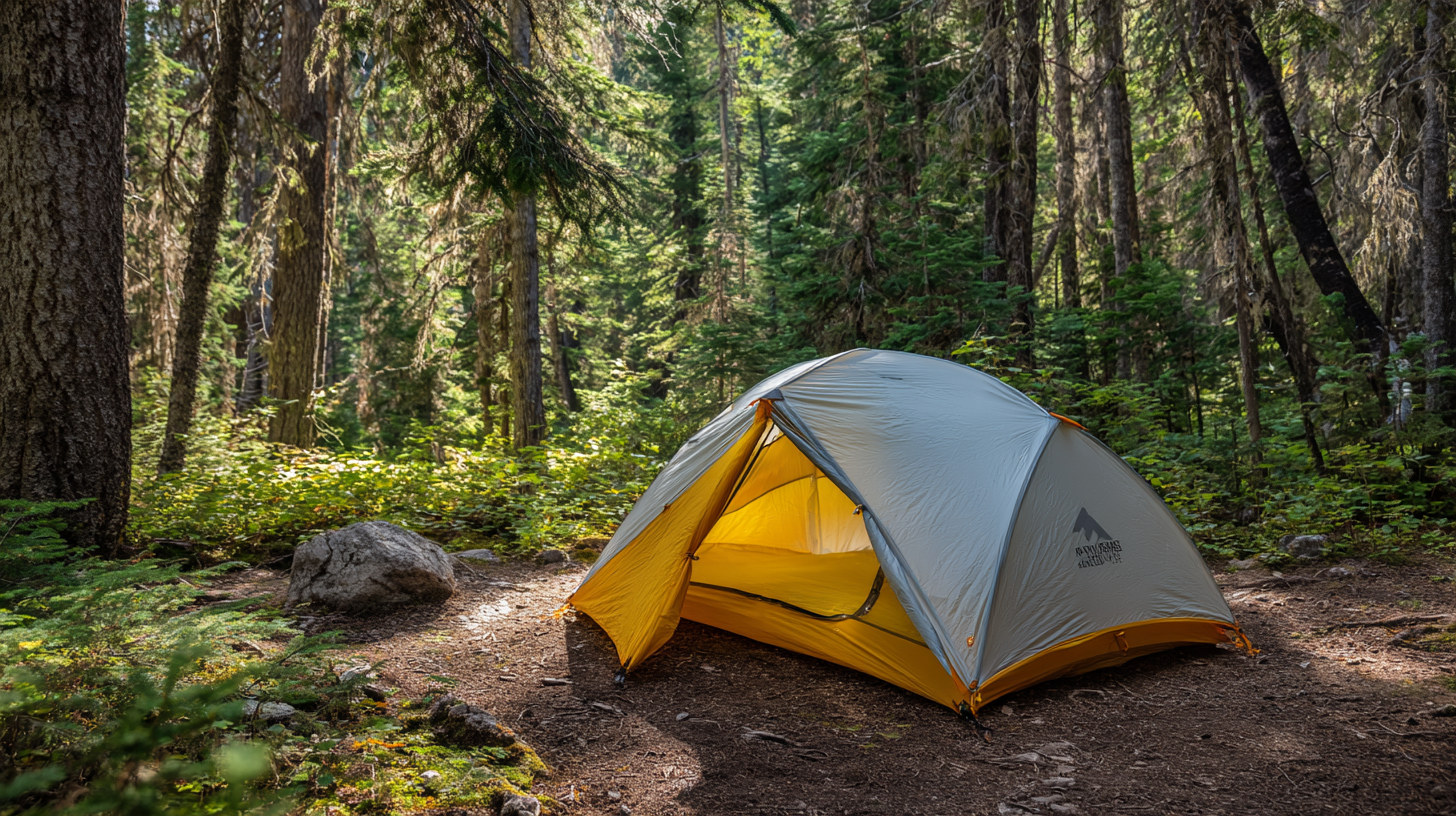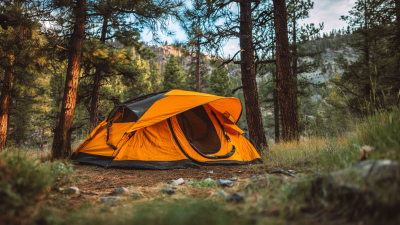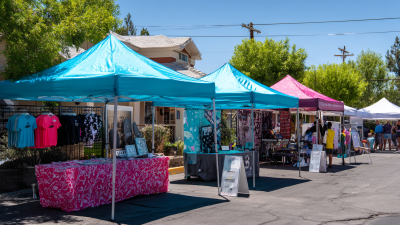Leave Your Message
-
E-mail
-
Whatsapp
In the ever-evolving world of outdoor gear, finding the perfect "One Person Tent" can be a daunting task for solo campers. As we head into 2025, advancements in technology and design have led to a remarkable variety of options that cater to different needs and preferences. Renowned camping expert, Sarah Thompson, a veteran outdoor enthusiast and author of "Tents for One: A Guide to Solo Camping," emphasizes the importance of choosing the right tent for your adventures. She states, "A great One Person Tent should not only provide comfort and protection but also enhance the overall experience of being in nature."
In this ultimate guide, we will explore the top 10 One Person Tents of 2025, highlighting their unique features, materials, and suitability for various terrains and climates. Whether you're a seasoned backpacker or a weekend warrior, the right tent can make all the difference in your solo camping experience. With innovations such as improved waterproofing, lightweight fabrics, and ease of setup, these tents offer functionality and convenience without compromising on comfort.
Join us as we delve into these remarkable options, helping you find the ideal One Person Tent that meets your solo camping needs and allows you to embrace the great outdoors like never before.

When selecting a one-person tent for solo camping, several key features can enhance your outdoor experience. First and foremost, weight and packability are crucial. A lightweight tent not only makes a significant difference during long hikes but also allows for easy transport. Look for materials that offer a good balance between durability and weight, such as high-tenacity nylon or a tent with a compact design for efficient packing.
Weather resistance is another vital consideration. A solid one-person tent should provide reliable shelter against wind, rain, and even snow. Look for options with a high hydrostatic head rating and a robust rainfly. Additionally, features like adjustable vents can improve airflow while preventing water from entering the tent. Finally, consider the ease of setup—color-coded poles and quick-clip systems can make pitching your tent hassle-free, allowing you to focus on the beauty of your surroundings rather than struggling with complicated setups.

When it comes to solo camping adventures, selecting a tent made from the best materials for durability and weather resistance is essential. High-quality fabrics like ripstop nylon or polyester with a waterproof coating can significantly enhance a tent's performance in harsh conditions. Additionally, a good tent should have strong seams and a robust frame to withstand wind and rain, ensuring a reliable shelter no matter where your journey takes you.
**Tips:** Opt for tents featuring a rainfly that extends to the ground for better protection against water ingress. Consider the weight of the tent as well; ultralight options can make your backpacking experience easier without sacrificing durability. Lastly, look for features such as vestibules for gear storage; this can maximize the interior space and keep your gear dry.
When testing various models, it's important to evaluate how easy they are to set up and pack down. A tent that offers a straightforward setup process will save valuable time and energy. Don't forget to check the manufacturer's specifications for seasonal ratings, as selecting a tent designed for the conditions you'll encounter can significantly enhance your camping experience.
This chart displays the durability and weather resistance ratings of the top 10 one-person tents for solo camping adventures in 2025, helping campers choose the best option based on their needs.
When selecting a one-person tent for backpacking,
weight and packability are paramount.
A tent that is lightweight ensures you can travel efficiently, especially on long hikes where every ounce matters.
Many top-tier options on the market today emphasize ultralight designs, providing you the benefits of easy transport without compromising on
durability and weather resistance. Consider models that pack down small, allowing you to maximize your backpack space for other essential gear.
Tips: Look for tents that feature a simple setup process. This can save you valuable time and energy at the end of a long day on the trail.
Additionally, pay attention to the materials used; high-quality, lightweight fabrics can significantly impact both weight and packability.
Some tents even offer freestanding designs, which can be advantageous in various camping terrains.
Ultimately, the right tent will enhance your solo camping experience, allowing you to focus on the adventure
rather than the logistics of your shelter. Investigate reviews and user experiences to find the best match for your specific needs,
ensuring your tent is as comfortable as it is practical for your solo excursions.
When considering one-person tents for solo camping adventures, understanding the spectrum of price ranges can significantly enhance your experience. Budget tents typically range from $30 to $100 and are often lightweight and compact, making them great for occasional campers. However, these tents may compromise on durability and weather resistance, which could lead to discomfort during unexpected weather conditions. Many budget options feature simple designs and basic materials that are sufficient for calm weather and shorter trips, but campers must be prepared to sacrifice some features or sturdiness.
On the other hand, premium one-person tents, priced from $200 to $500 and beyond, provide luxurious features that justify their hefty price tags. These tents often use high-quality, waterproof fabrics and advanced engineering for better insulation and ventilation. Features like easy setup mechanisms, additional storage pockets, and reinforced poles enhance both functionality and comfort. For serious outdoor enthusiasts, investing in a premium tent can offer significant advantages, including longevity and reliable protection from the elements, making them well worth the investment for frequent trips into the wilderness.
| Tent Model | Weight (lbs) | Price Range | Key Features |
|---|---|---|---|
| Tent A | 3.0 | $80 - $100 | Lightweight, Easy Setup, Weather Resistant |
| Tent B | 2.5 | $175 - $225 | Ultra-light, Compact, Mesh Ventilation |
| Tent C | 4.0 | $50 - $70 | Budget Friendly, Durable, Limited Space |
| Tent D | 3.5 | $120 - $150 | Waterproof, Good Ventilation, Storm-proof |
| Tent E | 2.8 | $200 - $250 | High Durability, Weather Guard, Lightweight |
| Tent F | 3.2 | $90 - $110 | Quick Setup, Spacious, Affordable |
| Tent G | 2.3 | $300 - $350 | Premium Material, Ultralight, Easy to Pack |
| Tent H | 4.2 | $60 - $80 | Basic Features, Adequate Space, Beginner Friendly |
| Tent I | 3.8 | $150 - $200 | High Wind Resistance, Limited Weight, Functional Design |
| Tent J | 2.7 | $250 - $300 | Luxury Comfort, High Insulation, Excellent Storage |
As solo camping gains popularity, choosing the right tent can significantly enhance the experience. In light of the advancements in technology, particularly in user feedback systems, camping gear reviews have become more accessible and valuable for enthusiasts. Recently, a notable update was made by a major app store, which introduced an AI-powered review summary feature. This innovation allows users to quickly understand the pros and cons of various camping tents without the need to sift through countless comments. Such tools are invaluable for solo campers who seek efficient and informed decisions when selecting their gear.

In the context of solo camping, user insights and performance evaluations are becoming increasingly crucial. A focus on genuine user experiences, devoid of commercial influences, is reshaping the landscape of product reviews. With growing trust in authentic feedback, campers are looking for tents that not only meet durability and weight standards but also resonate with their peers’ recommendations. As more platforms emphasize "real" reviews over paid promotions, solo campers can better navigate their options and choose the most suitable tent for their adventures, aligning with their personal preferences and needs.






